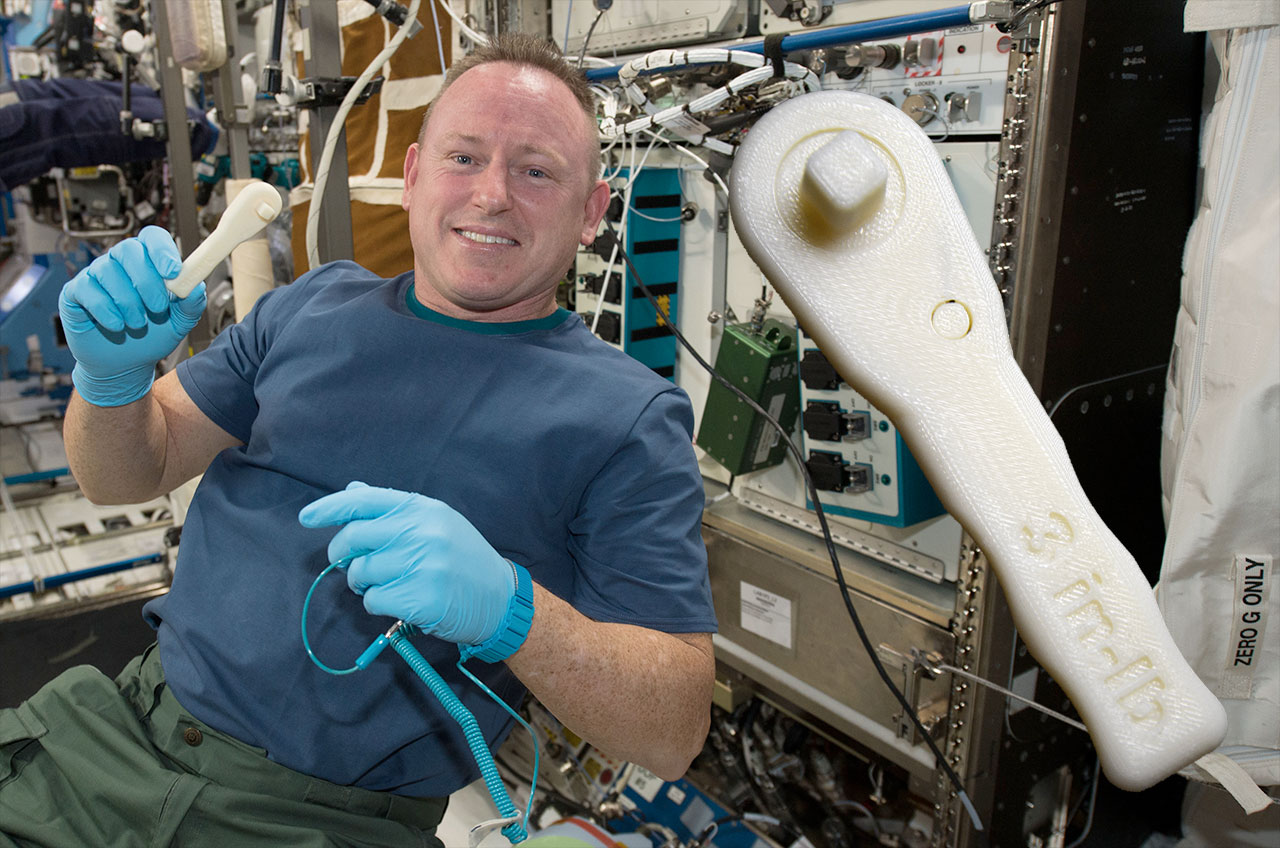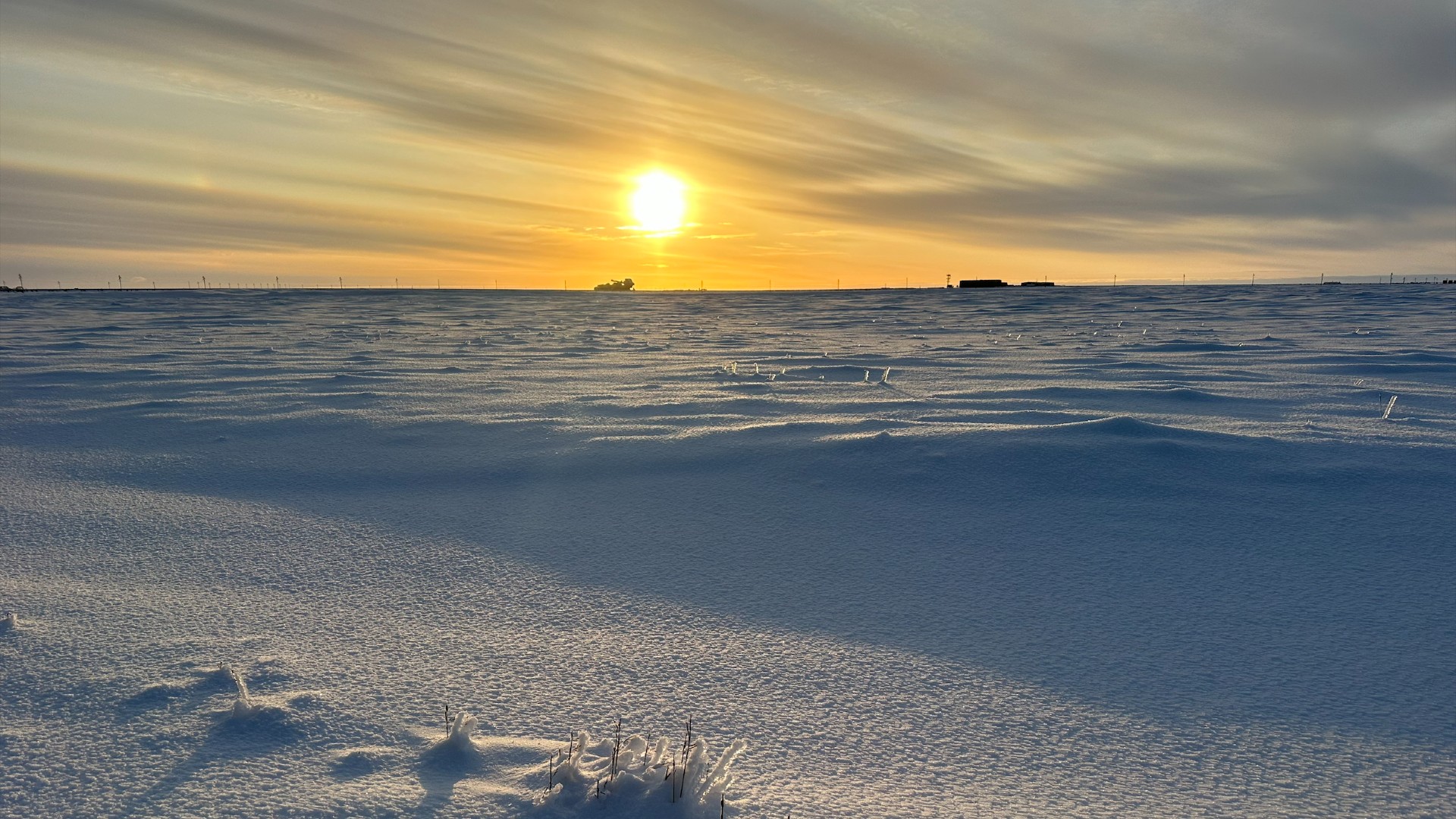How to 3D Print a Space Station Wrench Emailed to Orbit

The first-ever hand tool to be emailed up to the International Space Station can now be downloaded to anywhere on Earth.
NASA and Made In Space, Inc., which partnered to install the first zero-g 3D printer onboard the orbiting laboratory, have released the file used to 3D print a ratcheting socket wrench on the space station earlier this month. The 4.5-inch-long (11.4 centimeters) tool was not the first 3D object to be printed off the planet, but it made history as the first part to be transmitted to space for manufacture.
"Until today, all of the objects that were printed in space had previously been printed on the same printer before it was ever launched to increase the chances of success," Hasti Afsarifard explained on the Made In Space website on Dec. 17. "Additionally, until today, backup files of all of the models printed have been available on an SD card that was launched with the zero-g printer." [Contest: Win a 3D-printed space station ratchet!]
"For the first time, Made In Space uplinked a design which did not exist when the 3D printer was launched," Afsarifard wrote. "In fact, the ratchet was designed, qualified, tested, and printed in space in less than a week."
And, a week after that, the ratchet was made available on NASA's website for anyone to print out themselves. The file is available from: nasa3d.arc.nasa.gov/detail/wrench-mis
Print like an astronaut
"My colleagues and I just 3D-printed a ratcheting socket wrench on the International Space Station by typing some commands on our computer in California," Made In Space chief strategy officer Mike Chen wrote in a blog.
Breaking space news, the latest updates on rocket launches, skywatching events and more!
Chen and his team got the idea to create the wrench after overhearing that Butch Wilmore, the station's commander, was in need of one. Though the ratchet they designed and printed was intended only as an uplink test and not a tool for Wilmore to use, its production brought NASA and the space station one step closer to having a tool-on-demand capability.
"We are breaking new ground, not only in the way we manufacture in space, but also in the way we operate and approve space hardware that is built in space," said Niki Werkheiser, NASA's 3D printer program manager at the Marshall Space Flight Center in Huntsville, Alabama. "If you can transmit a file to the station as quickly as you can send an email, it opens up endless possibilities for all the types of things that you can make."
Onboard the space station, the wrench took four hours to create, as the printer deposited 104 layers of plastic (ABS thermoplastic resin, the same type of plastic used to form LEGO bricks).
The time needed to print the wrench on Earth depends on the make and model of the 3D printer used. For 3D Solid Solutions, a Houston-based 3D printing and mechanical design firm recruited by collectSPACE.com to print the ratchet for this article using a production-grade 3D printer, it took just over two hours.
Made In Space, Inc. engineer Noah Paul-Gin designed the ratchet to be created in one print with moveable parts but without any support material. The parts and mechanisms of the ratchet had to be enclosed to prevent pieces from floating in the microgravity environment of space.
The ratchet's all-in-one, enclosed design also makes it a good candidate for use with home or consumer-grade 3D printers, according to 3D Solid Solutions' Chad Devine. [10 Ways 3D Printing Could Transform Space Travel]
"I believe they should be able to print it without an issue," Devine told collectSPACE.com.
History in your hands
"It is great that a person with a 3D printer can download a piece of working history," Devine said.
The ratchet was the 21st object to be printed in space. It was the last in a series of test coupons and small parts to be made during the first phase of the zero-g 3D printer's inaugural use.
"These first [3D] prints will be brought down to Earth for examination where they'll be compared to identical objects manufactured on the ground," wrote Chen. "We'll use them to characterize the effects of long-term microgravity on our 3D-printing process, so that we can model and predict the performance of objects that we manufacture in space in the future."
A second print phase is scheduled for early next year.
"For our next phase of operations, we are working with the astronaut office to identify existing tools that we can make with the printer." Werkheiser said. "We can't wait until it is routine to see station astronauts use tools that they built in space."
To date, NASA has only released the file for the Made In Space ratchet, but the space agency notes on its website that it makes open source files available that can be used for 3D printing.
"I think NASA making the [ratchet's] file available to the public is a step in the right direction to show the versatility of 3D printing," Devine remarked. "This truly show how 3D printing will change the future."
Win a 3D printed space station ratchet! Click through to collectSPACE.com for contest details and to enter.
Follow collectSPACE.com on Facebook and on Twitter at @collectSPACE. Copyright 2014 collectSPACE.com. All rights reserved.

Robert Pearlman is a space historian, journalist and the founder and editor of collectSPACE.com, a daily news publication and community devoted to space history with a particular focus on how and where space exploration intersects with pop culture. Pearlman is also a contributing writer for Space.com and co-author of "Space Stations: The Art, Science, and Reality of Working in Space” published by Smithsonian Books in 2018.
In 2009, he was inducted into the U.S. Space Camp Hall of Fame in Huntsville, Alabama. In 2021, he was honored by the American Astronautical Society with the Ordway Award for Sustained Excellence in Spaceflight History. In 2023, the National Space Club Florida Committee recognized Pearlman with the Kolcum News and Communications Award for excellence in telling the space story along the Space Coast and throughout the world.


